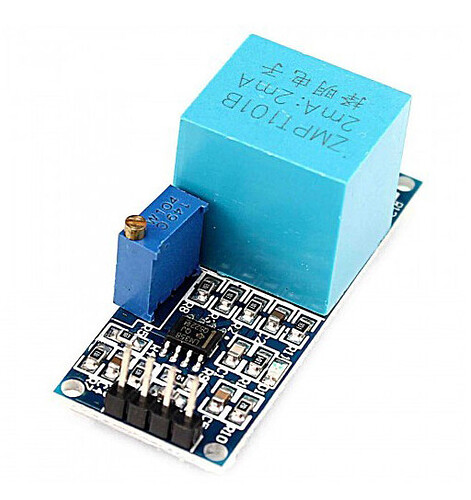So it occurs to me that these ‘Sun Gtil’ units show a negative output figure when feeding the grid, but also these inverters have a rs232/485 adaptor for a wifi dongle. Presumably this then connects to some kind of software which, eventually I’m guessing logs the flow etc. So I’m wondering if the negative current flow could be hidden in this data somewhere?
The rs485 port is only showing you values it is not possible to tell the inverter how much energy to produce.
That’s all I need, I just want to read when it exports to the grid, dont need to make any changes to the way the inverter functions at all.
Just been reading up about AC power, apparently, broadly speaking, when current flow is negative (to the grid) then the phase of the current will be mostly out of phase with the voltage. Given a current to voltage conversion, then perhaps something along the lines of a comparator could detect when voltage and current cancel, or significantly drop in amplitude.
I see two ways to go about this: one requiring experiment and development, the other tried and tested. The tried and tested way is to use an emonTx or Arduino with emonTx Shield to do a power measurement, then in software detect the sign of the power and use that to drive a relay.
If you want to develop your own circuit, you can use the same a.c. adapter (or any transformer) and the c.t. fed into op.amps to square off the waves, then you can use a comparator or whatever logic you like to compare the phases. Your big problem will the amplitude range of the current, which is why I suggest getting a square wave as the first step.
I’ve just got one of these ZPMT101 for my grid reference. Will make probably some kind of LM358 buffer for the CT signal. Initially I’ll just have a look at what the waveforms look like together before going further.
I’m afraid those modules are bad news. There are filters incorporating the op.amp you can see, and from my analysis, these will introduce a massive phase shift that’s all but impossible to compensate for if you’re trying to measure power.
For your application, and provided all your loads have a near-unity power factor, it may be satisfactory; but often, low-power loads can have a very poor power factor, and then you can expect the wrong answer - import showing as export. It’s less likely to happen the other way round.

